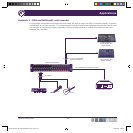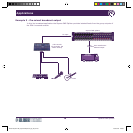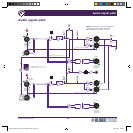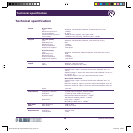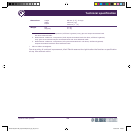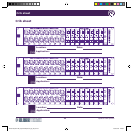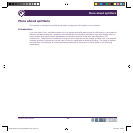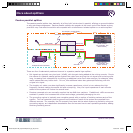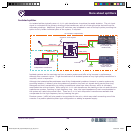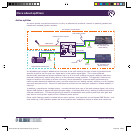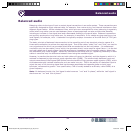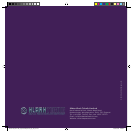
Balanced audio
Square ONE Splitter 27
Balanced audio
Balancing refers to the type of input or output signal connections in an audio system. These connections are
specifically designed to reject external noise, for example, from mains wiring, and internal interference from
adjacent signal cables. Unlike unbalanced lines, which are more susceptible to noise, balancing is especially
useful when long cable runs are used between pieces of equipment and can also provide other benefits,
including an increase in line signal level and a decreased possibility of ground loops. Balanced connections
are typically employed on long cable runs, for example, to amplifiers, or for cables carrying sensitive or low
level signals, for example, mics. A balanced line typically employs connectors of the XLR and 1/4” TRS jack
plug types.
The basic principle of balanced interconnection is the cancelling out of any electrical noise by means of a
three-cable connection to achieve the required signal. Two of the cables, called “hot” and “cold”, are used to
carry signals and the third is a grounded shield that surrounds the hot and cold cables. (An unbalanced
connection only has two cables, one of which, the grounded shield, is also used for signal return.) As the hot
and cold cables are of equal voltage (and the same source impedance) but of opposite polarity, when they
are subtracted, any noise voltages - caused by interference and noise pick-up - appearing identically on both
cables is cancelled out; the difference between them being the resultant signal.
However, in practice the electrical noise on both cables will never be identical, and the degree to which it is
reduced is measured by the common mode rejection ratio (CMRR). The electronically balanced input and
output connections of the Square ONE Splitter have the benefit of high common mode rejection (CMR), which
eliminates externally induced interference such as mains hum etc. CMR is the ability of a balanced input to
reject the part of the incoming signal that has the same amplitude and opposite phase on both input
terminals, referenced to ground. As a specification, CMR is usually stated as a dB ratio, called CMRR, at a
given frequency.
Note: On balanced circuits, the ‘hot’ signal is also known as “+ve” and “in phase”, while the ‘cold’ signal is
also known as “-ve” and “out of phase”.
DOC02-SQ1SPLITTER_Square ONE Splitter_Op_IssC.pdf 39 27/04/2010 17:00:44



